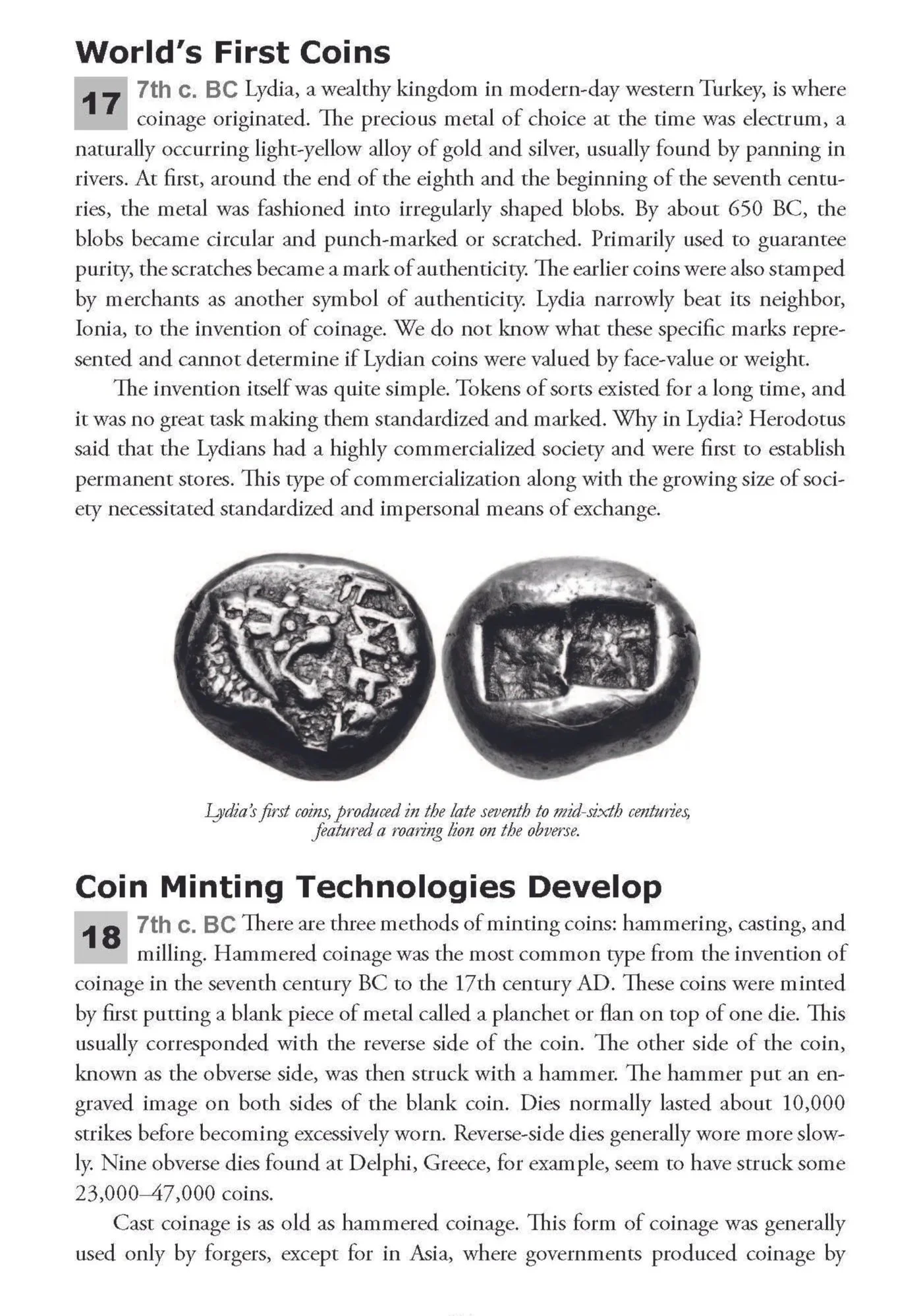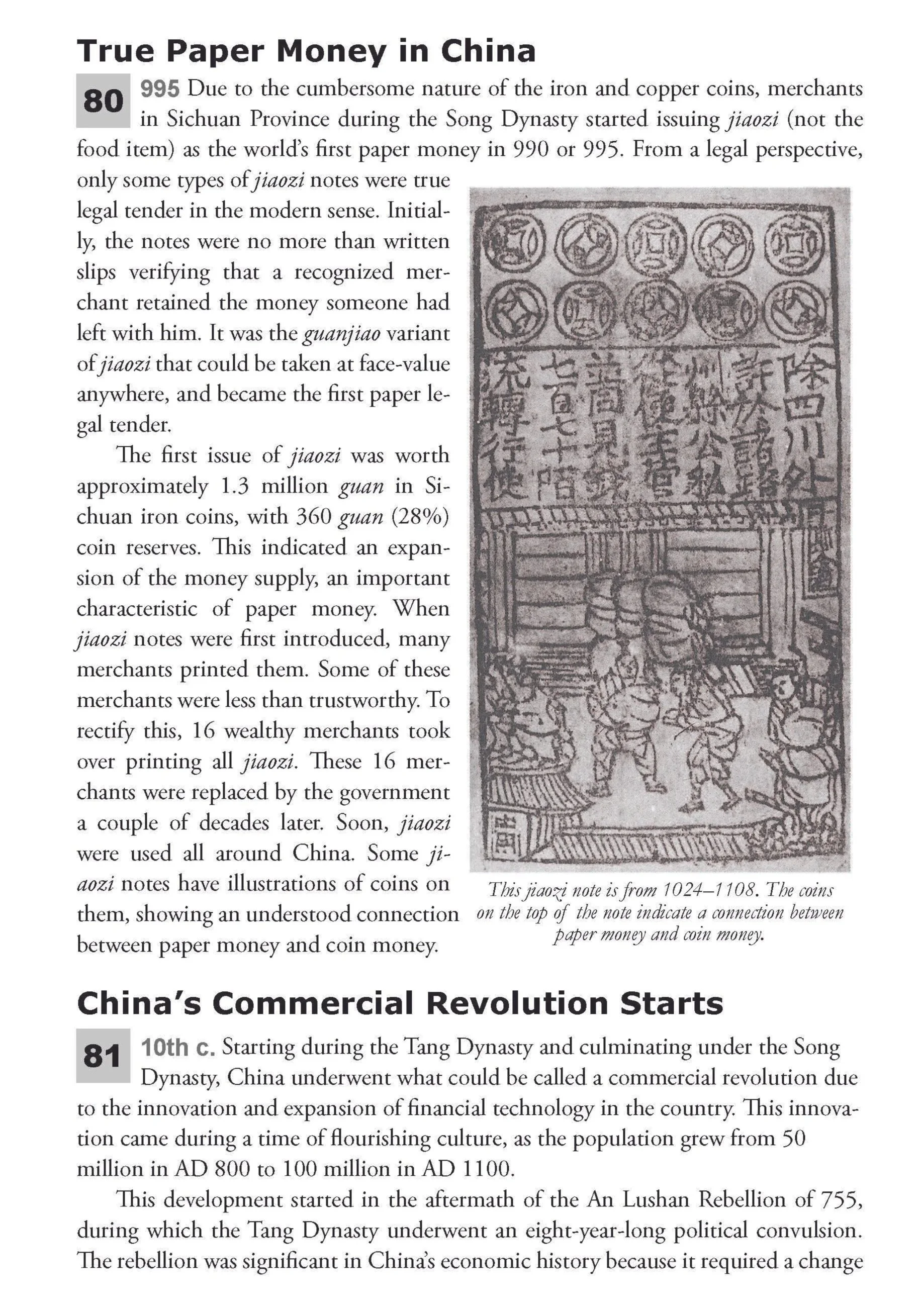A Look Inside 500 Events That Shaped the History of Money
By breaking the history of money into 500 events, 500 Events That Shaped the History of Money can tell the story of financial developments around the world and through time clearly. This creates a more complete and thorough—while also understandable—history of money.
500 Events That Shaped the History of Money starts with the first societies and civilizations, then moves onto to the development of coinage and the monied economy. While the first banking originated before coinage, coinage was key in allowing for the development of more complex financial systems, as it made money value more easily recorded and transferred. Governments could now pay employees more easily and people could buy things rather than barter or trade. These changes were key for economic development of early societies.
500 Events That Shaped the History of Money continues into the present, showing how the past 5,000 years of financial innovations have led to the design of today’s society. Financial innovations have been key in making possible many features of modern society, from sky scrapers to salt and pepper.
Buy now on:




